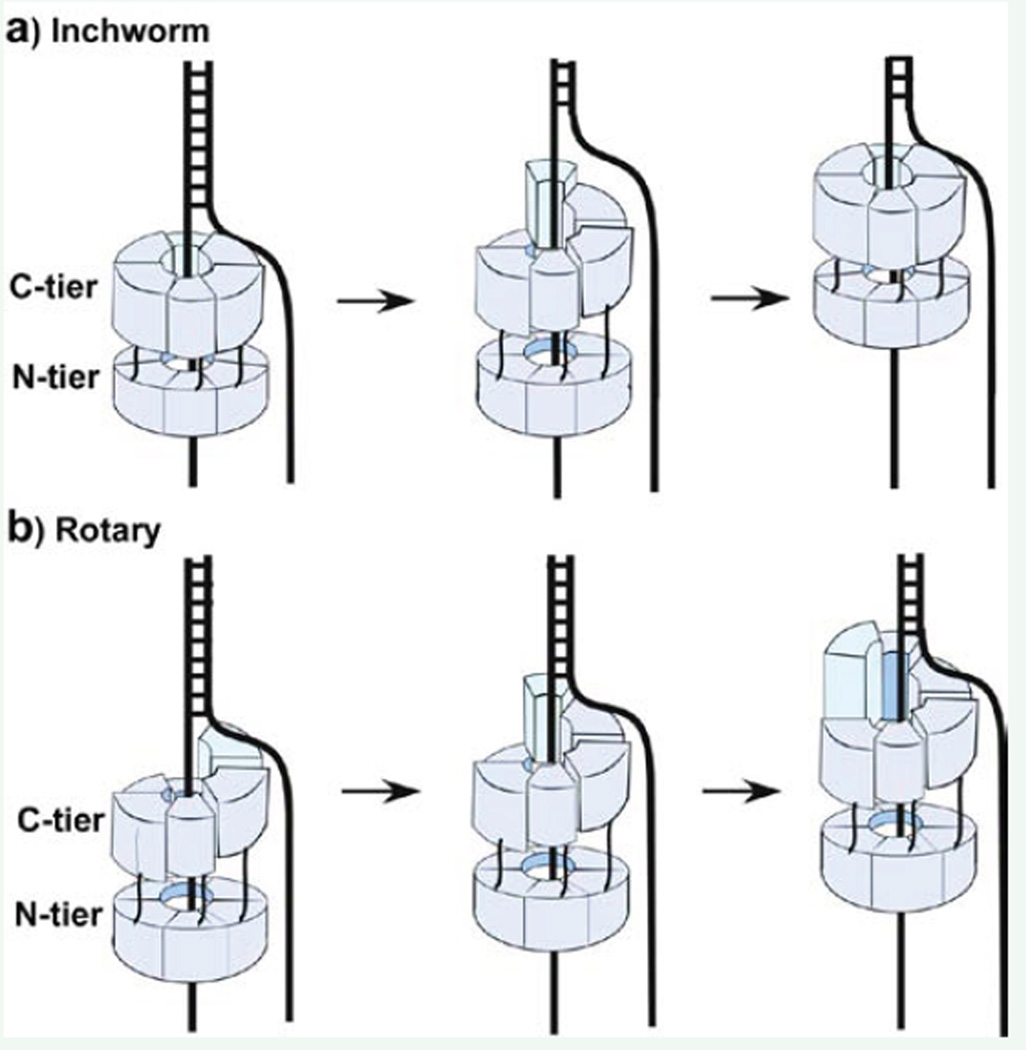Figure 2.
Proposed translocation mechanisms of hexameric helicases. Replicative helicases are hexameric rings composed of an N-tier and C-tier; the motor domains are in the C-tier. a) Inchworm mechanism. Left: the C- and N-tiers are parallel and compact. Middle: The C-tier opens at one interface and expands into a spiral structure, melting DNA and leaving the N-tier a flat uninterrupted ring. Right: The C-tier reassumes the compact shape and translocates the N-tier on DNA. b) Rotary model. Left: The C-tier is shaped as a spiral lock washer and connects to a flat N-tier ring. Middle: ATP hydrolysis translates the lock washer shape by one protomer, resulting in DNA translocation. Right: ATP hydrolysis translates the lock washer shape by one protomer, resulting in DNA translocation.

